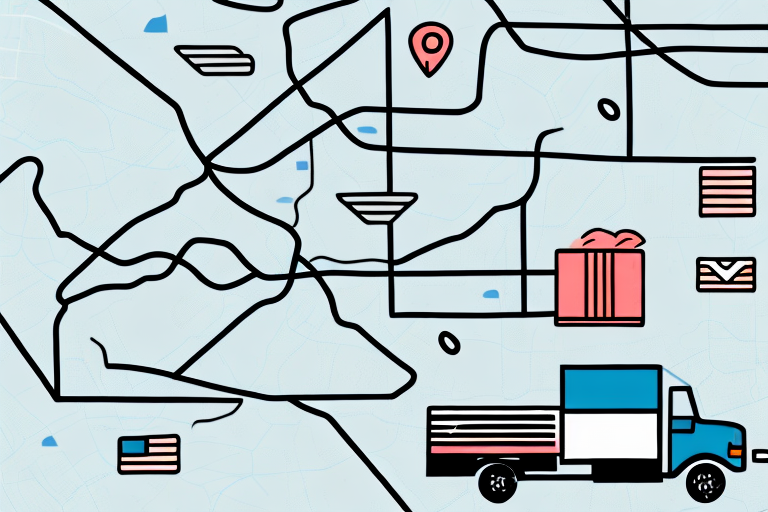Understanding UPS Box Rates: What You Need to Know
When it comes to shipping products with UPS, one of the most important factors to consider is the box rate. Understanding how UPS calculates box rates can help you choose the right box size, package your items properly, and negotiate better rates for your business. In this article, we'll break down everything you need to know about UPS box rates, including how they're calculated, what factors impact them, and how you can lower your expenses.
How UPS Calculates Box Rates
UPS box rates are determined by several factors, each playing a crucial role in the final shipping cost. Here's a detailed breakdown:
Dimensional Weight Formula
UPS uses a dimensional weight formula that considers the size of the box and the weight of its contents. This means that shipping a large, lightweight item might cost more than shipping a smaller, heavier one.
Distance and Delivery Service
The distance your package needs to travel also impacts the cost. Additionally, the type of delivery service you choose—ranging from ground shipping to express delivery—affects the box rate.
Destination
Shipping to remote or hard-to-reach locations can incur higher costs due to the increased difficulty and expense of delivery.
Shipping Volume and Discounts
UPS offers discounts for bulk shipments or regular shipping schedules. Businesses that ship frequently can benefit significantly from these discounts.
Factors Impacting UPS Box Rates
In addition to the general factors, specific elements can influence your UPS box rates:
Package Size and Shape
The dimensions of your package are critical. Larger or unusually shaped items may require custom boxes to prevent damage and additional costs.
Weight of the Package
Heavier items generally cost more to ship. However, the dimensional weight can sometimes override actual weight, especially for bulky items.
Distance Traveled
Longer distances mean higher shipping costs. International shipments also involve customs fees and taxes, adding to the overall expense.
Type of Delivery Service
Expedited services like overnight delivery come at a premium, while standard shipping options can help reduce costs.
Choosing the Right Box Size
Selecting the appropriate box size is essential for controlling UPS box rates and ensuring the safety of your items:
Measuring Your Items
Start by measuring the length, width, and height of your item. Add a few inches to each dimension for padding and cushioning.
Using Shipping Calculators
Utilize online shipping calculators to determine the dimensional weight of your package and estimate shipping costs.
Custom Boxes for Unusual Items
If your item is oddly shaped, consider investing in a custom box to ensure a secure fit and prevent damage during transit.
Considering Package Weight
Choose a box that can support the weight of your items without breaking or tearing. This is especially important for heavy or multiple items shipped together.
Proper Packaging to Lower Box Rates
Effective packaging not only protects your items but also helps in managing UPS box rates. Here are some best practices:
- Use sturdy cardboard boxes suitable for the weight and size of your items.
- Wrap fragile items in bubble wrap or foam for extra cushioning.
- Fill empty spaces with packing peanuts or other materials to prevent shifting.
- Seal the box securely with strong, clear packing tape.
- Clearly label the box with the recipient's address and necessary tracking information.
Environmental Considerations
Using sustainable packaging materials and reducing waste can benefit both the environment and your budget. Consider biodegradable packing materials or reusing boxes whenever possible.
Negotiating Better UPS Box Rates
For businesses that ship frequently with UPS, negotiating better box rates can lead to significant savings:
- Consolidate Shipments: Reduce the number of packages by combining shipments.
- Utilize Online Tools: Track and manage shipping expenses effectively with UPS's online resources.
- Loyalty Programs: Sign up for UPS's loyalty programs to access discounted rates and other benefits.
- Account Manager Discussions: Engage with your UPS account manager to tailor rates based on your specific shipping needs.
Comparing UPS Box Rates to Other Shipping Options
While UPS box rates can be higher than some alternatives, they offer several advantages that may justify the cost:
- Wide range of delivery options and tracking tools.
- Reputable for reliability and on-time delivery.
- Strong customer support and service networks.
Retail vs. Contract UPS Box Rates
Understanding the difference between retail and contract rates is crucial for optimizing shipping costs:
Retail Rates
Standard rates applicable to individuals or businesses without a UPS account or shipping contract.
Contract Rates
Negotiated rates for businesses that ship in large volumes, offering significant savings compared to retail rates.
Leveraging UPS's Online Shipping Tools
UPS provides several online tools to help manage box rates and reduce shipping costs:
- Shipping Calculator: Estimate shipping costs based on package size, weight, and distance.
- Online Tracking: Monitor shipments in real-time to ensure timely delivery.
- Expense Management: Use UPS's tools to keep track of and optimize your shipping expenses.
Tracking and Managing UPS Box Rate Expenses
Effective management of shipping expenses can lead to substantial savings:
Using Accounting Software
Integrate UPS shipping data with your business accounting software to track and analyze shipping costs.
Regular Expense Reviews
Periodically review your shipping expenses to identify areas for cost reduction, such as consolidating shipments or renegotiating rates.
Common Mistakes to Avoid with UPS Box Rates
Avoiding common pitfalls can help you maintain efficient and cost-effective shipping practices:
- Poor Packaging: Inadequate packaging can lead to damaged items and increased costs.
- Incorrect Box Size: Choosing the wrong box size can result in higher shipping fees.
- Neglecting to Measure Accurately: Accurate measurements are essential for calculating dimensional weight.
Real-World Examples of Savings with UPS Box Rates
Many businesses have successfully reduced their shipping costs by optimizing their UPS box rates:
- A small e-commerce business saved over $8,000 annually by negotiating better rates with their UPS account manager.
- Another company reduced shipping costs by 50% by consolidating shipments and utilizing UPS's online tracking tools.
Future Trends in UPS Box Rates
As the e-commerce landscape evolves, UPS box rates are expected to adapt to new trends and technologies:
Growth of E-commerce
The continued expansion of online shopping will make UPS box rates increasingly important for businesses managing shipping expenses.
Free Shipping Offers
The rise of "free shipping" promotions requires businesses to have strategic shipping plans to absorb costs effectively.
Technological Advancements
Improvements in technology and automation will likely enhance the efficiency of managing shipping costs and negotiating rates.
Conclusion
Understanding how UPS calculates box rates is crucial for managing your shipping expenses and saving money for your business. By following these tips and guidelines, you can choose the right box size, package your items properly, and negotiate better rates with UPS. Whether you're a small e-commerce business or a large enterprise, taking the time to understand and manage your UPS box rates can have a significant impact on your bottom line.
For more information, visit ShipScience.








